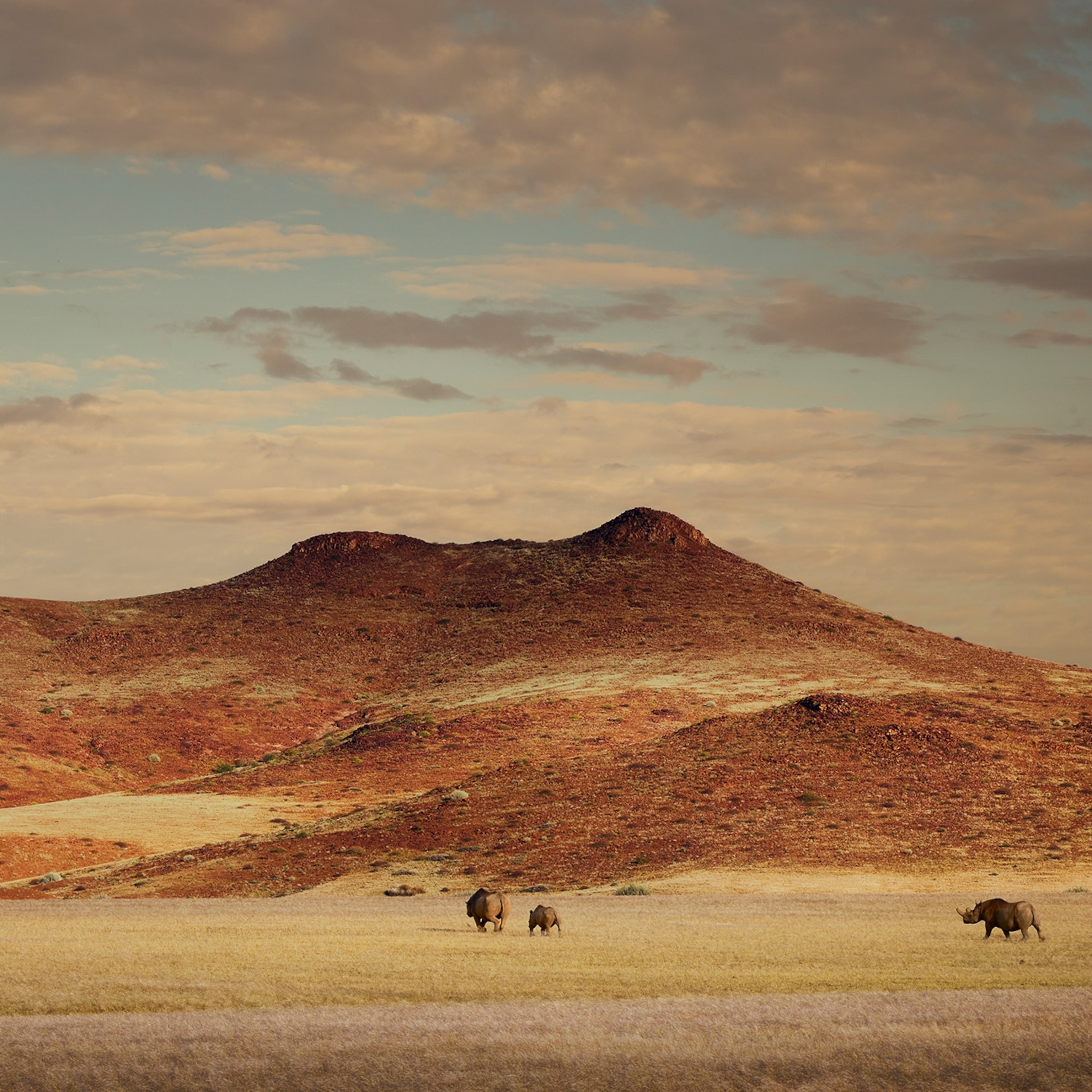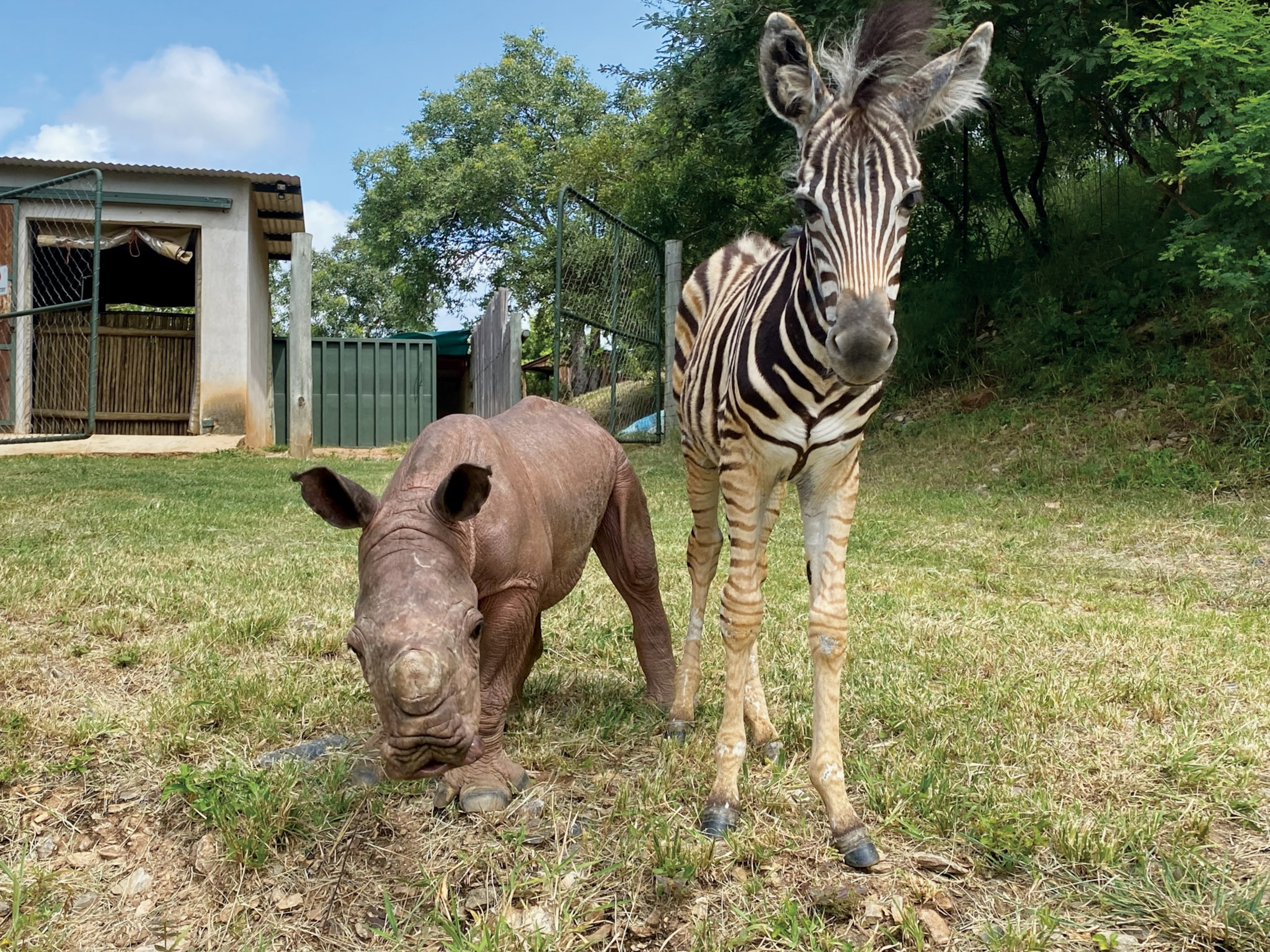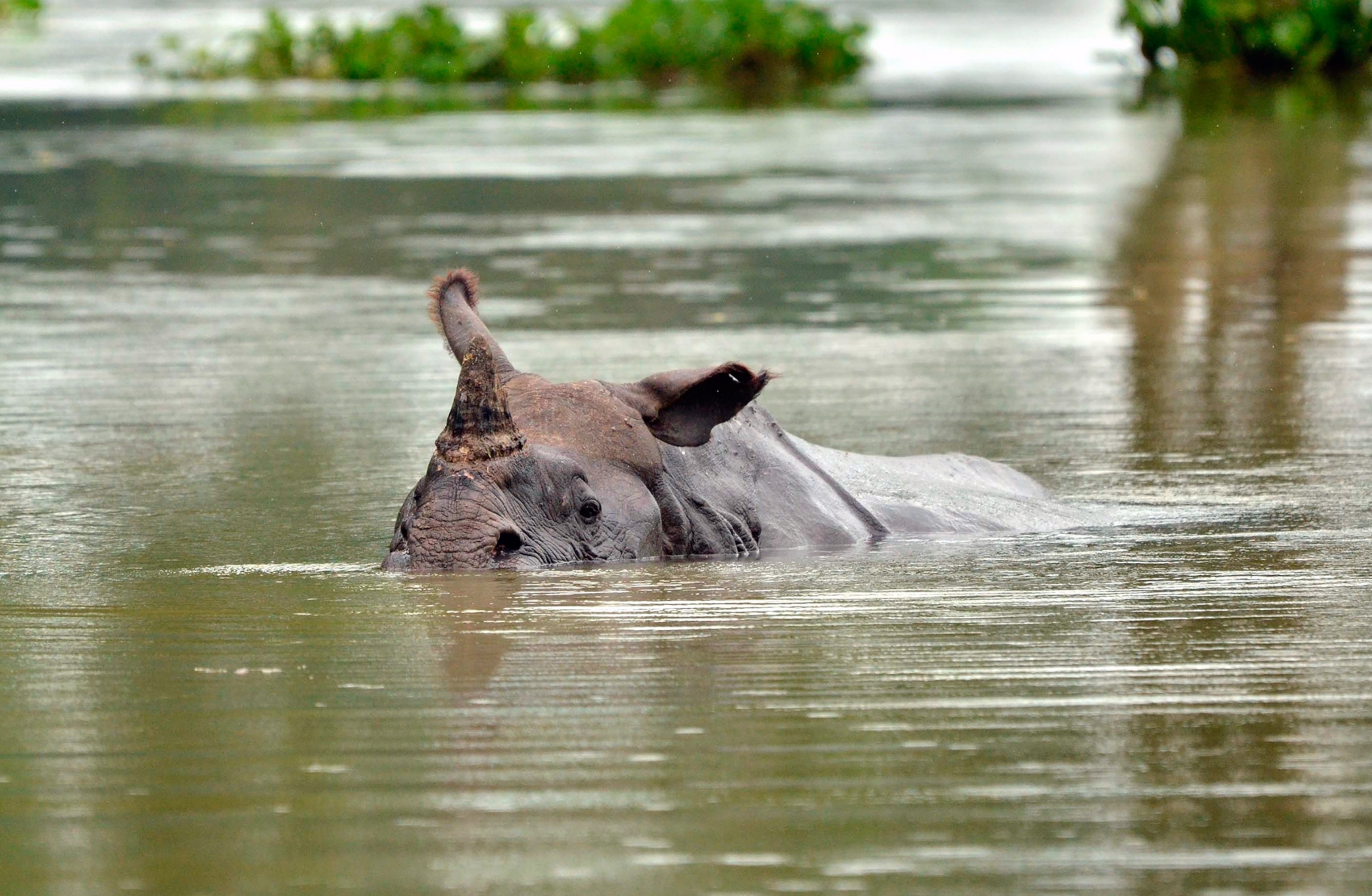
Floods in India Drown Rare One-Horned Rhinos
As monsoon floods course through Assam, India, rescue response teams try to nurse surviving animals back to health.
Raging floods that started on July 25 submerged up to 80 percent of India’s Kaziranga National Park, in the northeastern state of Assam. The flooding subsided on July 31, but hundreds of animals have drowned, including more than a dozen rare Indian rhinoceroses. Across the country, the flooding has displaced millions of people and killed 152.
As of Tuesday, the Brahmaputra River has started to recede. Satyendra Singh, the park’s director, says 30 percent of the 166-square-mile (430-square-kilometer) park is still flooded.
“Some 270 wild animals have died, this has been one of the worst seasons of flooding,” Singh tells Sky News. “The devastation to the park’s infrastructure, roads, and bridges has been very severe.”
According to Rupa Gandhi, chief of communications at the Wildlife Trust of India (WTI), a nature conservation organization involved in rescuing the surviving animals, carcasses have started to emerge and there may be another round of floods in about a month.
The Victims
In addition to being a refuge for two-thirds of the world’s 3,000 Indian rhinos, hog deer, tigers, elephants, buffalo, and about 30 other mammal species also inhabit the UNESCO World Heritage site. Reports say 16 to 20 rhinos in the park have drowned, including eight calves, four of which were females.
Rescue teams in boats pulled eight rhino calves out of the water with ropes. The Centre for Wildlife Rehabilitation and Conservation (CWRC), run by WTI, the International Fund for Animal Welfare (IFAW), and the Assam Forest Department, have rescued more than a hundred animals.
Rathin Barman, deputy director of WTI, told the Wall Street Journal the calves are now being swaddled in blankets, and bottle-fed milk and vitamin supplements.
“Some of them are in a critical condition because they were about to get drowned before we saved them. They are also suffering from severe trauma of the floods,” Barman says. “We will release them only after two years,” he tells NDTV.
Gandhi adds that the calves are being treated with antiseptics. WTI and IFAW are currently trying to raise funds to care for the animals.
The Indian rhinoceros, or the greater one-horned rhino, is the country’s most vulnerable species. The animal’s population has grown from 600 in 1975 to 3,500 by mid-2015 in India and Nepal. Males can weigh almost three tons, so Indian rhinos are one of the largest rhino species. Their single black horns can be up to almost two feet (60 centimeters) long, and they primarily graze on grass.
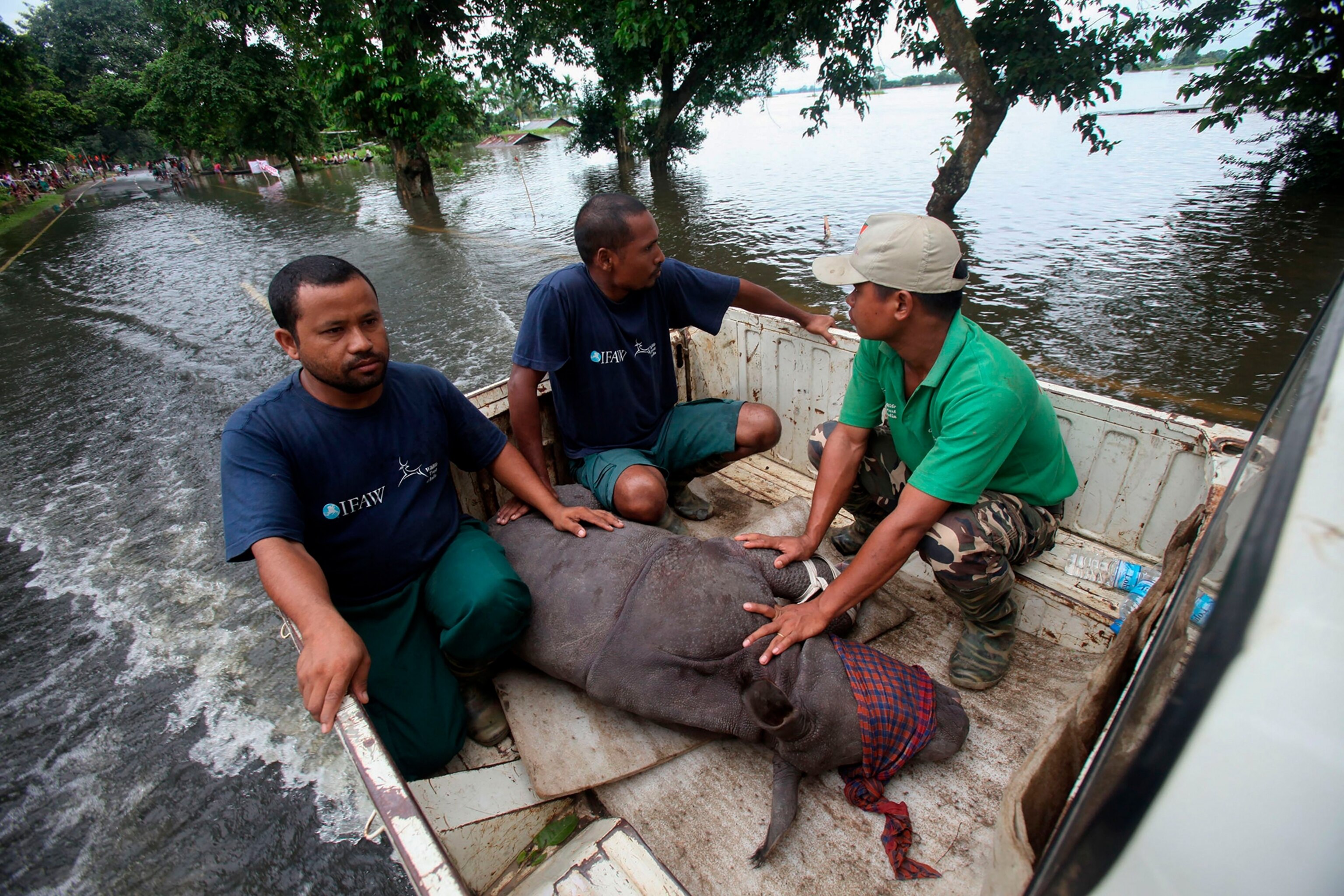
Experts counted 2,401 Indian rhinos living in the park before the flood hit. The rampant river also claimed the lives of 11 wild boar, nine swamp deer, six sambar, three buffalo, two hog badgers, one porcupine, and one python.
But hog deer suffered the most. Kaziranga was originally home to about 20,000 hog deer, but more than 150 have drowned and 12 were mowed down by vehicles on National Highway 715 as they tried to escape the inundated park. Teams have rescued 92 hog deer, and 62 have been released.
Impacts on the Human Population
In addition to flushing out animals, the flood poured into forest guards’ camps. Flooding has forced nearly two million people out of their homes near the park, reportedly killing at least 31 people in Assam. India’s National Disaster Response Force has established 42 flood rescue response teams throughout the country to evacuate and relocate people.
Suvasish Das, the park’s district forest officer, says rhinos are fleeing from the waterlogged park in search of food. Two rhinos have already created chaos by taking to the nearby national highway. Straying makes the rhinos easy targets for poachers who go after rhinos for their horns, which are used in traditional Chinese medicine or as status symbols.
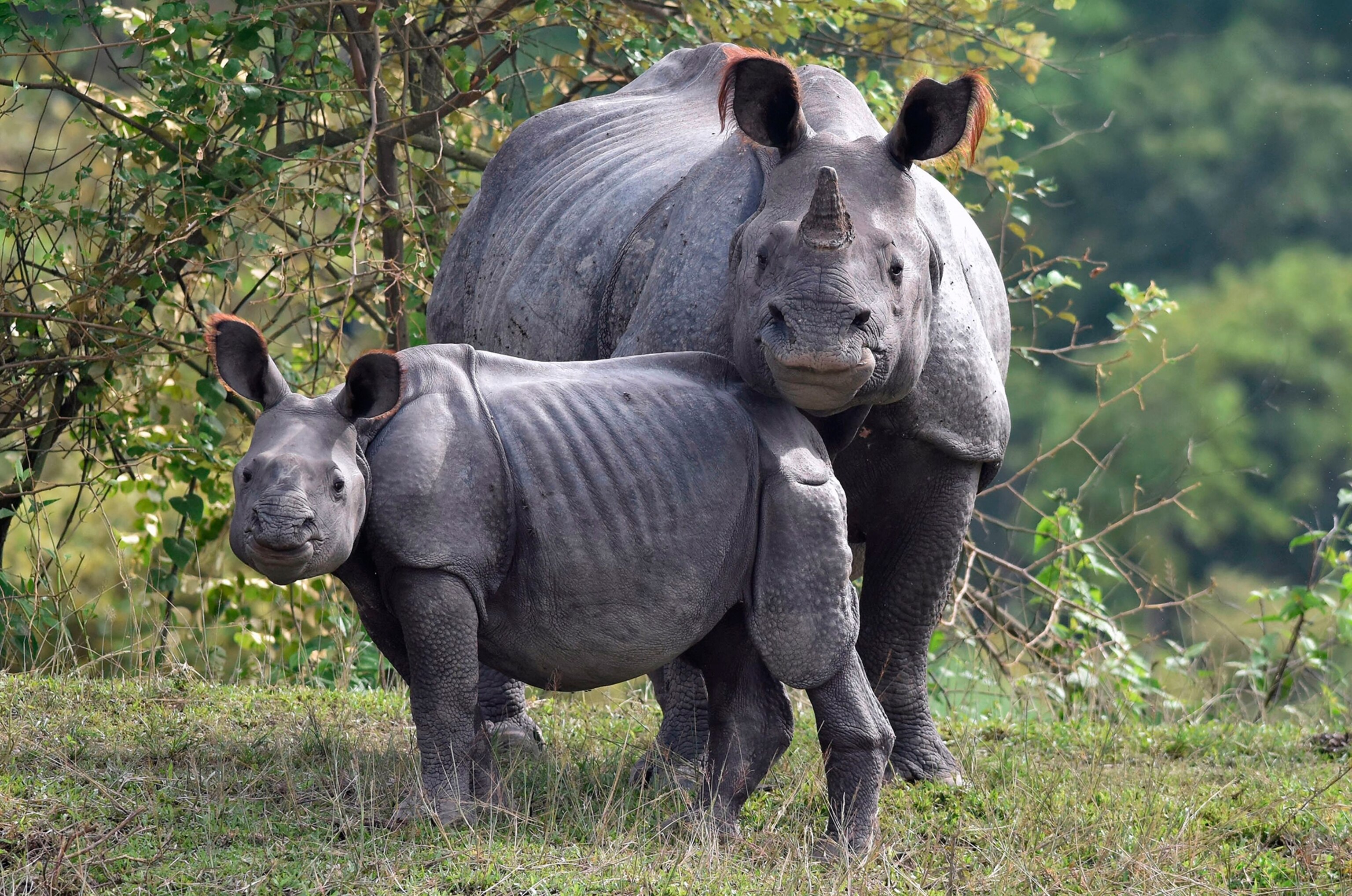
“Poachers take advantage of the floods to target helpless animals, especially when forest camps are inundated,” Gandhi writes in an email.
Steve Winter, a National Geographic photographer, visited Kaziranga National Park in 2008 on assignment. Winter says inside the park, there are strong anti-poaching regulations.
“The animals are conserving themselves by staying in the park,” Winter says.
The Benefits of Flooding
Winter says the park’s flooding is vital for animals and people, as it helps deposit fertile alluvial soil from the Brahmaputra River. The rich soil in turn supports grasses and rice, one of the primary exports of Assam.
“Without the flooding, the park probably wouldn’t exist because without the grasses, the animals probably wouldn’t be there,” Winter says.
Das says it’s necessary for Kaziranga National Park to undergo some level of flooding each year to keep the forest alive. Floods replenish about 400 bodies of water in the park, as well as wash away water hyacinth and weeds to clean the water.
“In a way, the flood is a blessing as fresh silt and alluvium deposits increase the productivity of the forest undergrowth,” Das tells the Hindu. “While it is a huge problem for the people, such flooding is good for the park’s health.”
According to Gandhi, there have been three major floods per monsoon season. This current flood is the worst at the park since 1998, a year that saw the deaths of scores of rhinos, water buffalo, wild pigs, and sambar. Some 473 hog deer drowned in that flood.
“Without the monsoon, Kaziranga wouldn’t exist,” Winter says. “Good and bad, all in one.”
Follow Elaina Zachos on Twitter.

